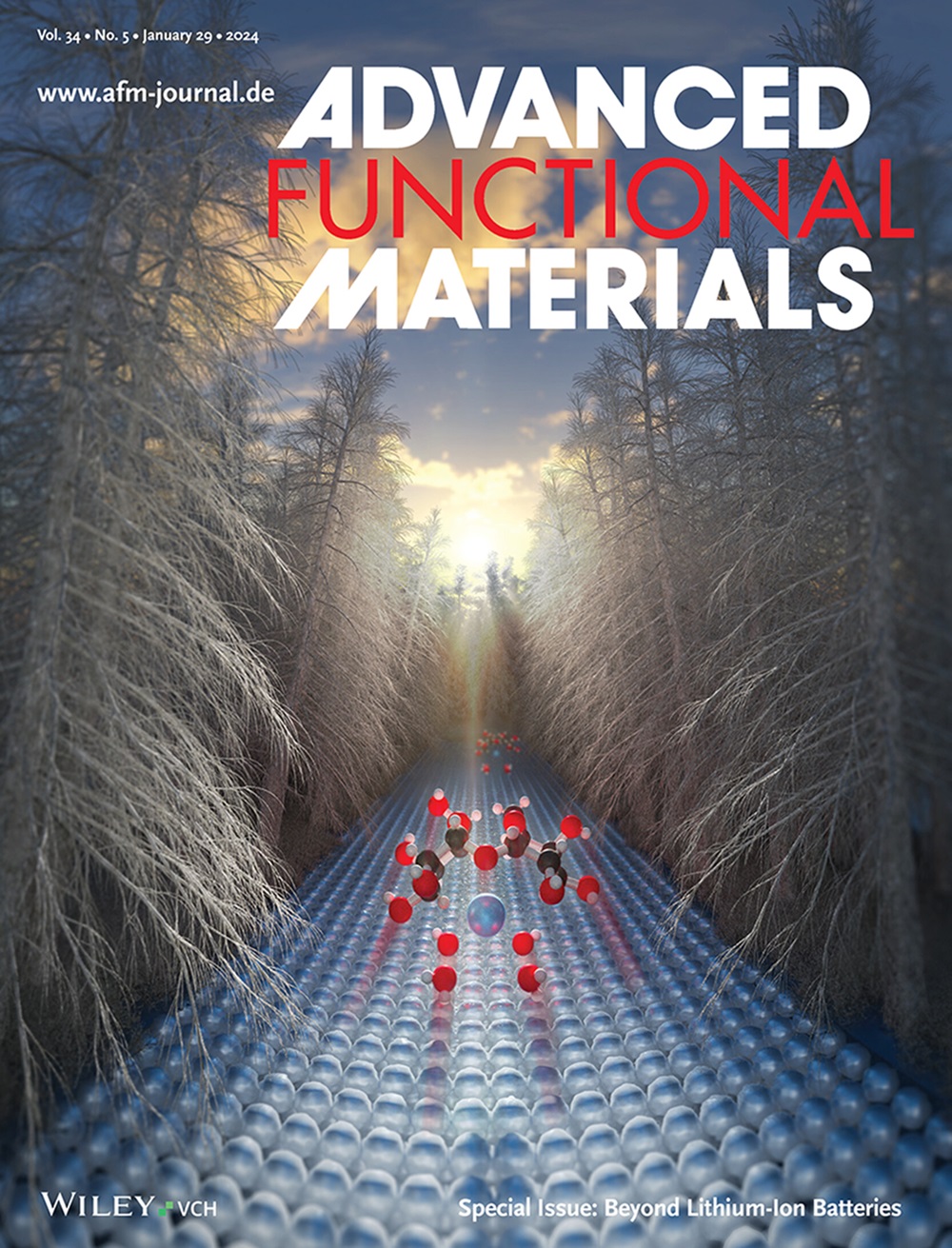通过光耦合和电荷载流子限制策略促进光催化氢气转化
IF 18.5
1区 材料科学
Q1 CHEMISTRY, MULTIDISCIPLINARY
引用次数: 0
摘要
高性能光催化需要高效的光吸收和低电荷载流子重组率。本文展示了一种光耦合和电荷载流子约束策略,可同时提高光吸收率和抑制电荷载流子重组,从而实现高性能光催化。该策略是通过将催化剂微妙地融入双核壳结构(如 CdS@SiO2@NaYF4:Yb/Tm)来实现的,其中 CdS(催化剂)、SiO2 和 NaYF4:Yb/Tm 分别作为外壳、外核和内核。有趣的是,被吸收的光可以通过 CdS 和 SiO2 界面之间的多次反射被限制在 CdS 层内,从而实现光的限制。这种限制赋予了更长的光驻留时间、更强的光再吸收和再利用效率,以及单位时间内更高的光生电荷载流子浓度。此外,绝缘的二氧化硅能将光生电荷载流子限制在 CdS 层内,从而缩短其扩散长度,降低重组率。值得注意的是,当这种双核壳结构用作光催化剂时,其光催化氢气进化率高达 74.67 mmol g-1 h-1,是原始 CdS 的 11 倍。这项工作为设计和合成高性能光催化剂提供了一种新策略。本文章由计算机程序翻译,如有差异,请以英文原文为准。

Boosting Photocatalytic Hydrogen Evolution by a Light Coupling and Charge Carrier Confinement Strategy
High-performance photocatalysis requires efficient light absorption and low charge carrier recombination rates. Herein, a light coupling and charge carrier confinement strategy is demonstrated to simultaneously enhance the light absorption efficiency and suppress the charge carrier recombination for high-performance photocatalysis. The strategy is achieved by the delicate incorporation of catalysts into a dual-core-shell structure (e.g., CdS@SiO2@NaYF4:Yb/Tm), in which CdS (catalyst), SiO2, and NaYF4:Yb/Tm serve as shell, outer core, and inner core, respectively. Interestingly, the absorbed light can be confined within the CdS layer through multiple reflections between the CdS and SiO2 interfaces, achieving light confinement. This confinement endows a longer light residence time, enhanced light reabsorption and reutilization efficacy, and a higher concentration of photogenerated charge carriers per unit of time. Moreover, the insulating SiO2 can confine the photogenerated charge carriers within CdS layer, thus shortening their diffusion length for reduced recombination rates. Notably, when employed as the photocatalyst, this dual-core-shell structure showed a superb photocatalytic hydrogen evolution rate up to 74.67 mmol g−1 h−1, which is 11 times higher than that of pristine CdS. This work provides a new strategy for the design and synthesis of high-performance photocatalysts.
求助全文
通过发布文献求助,成功后即可免费获取论文全文。
去求助
来源期刊

Advanced Functional Materials
工程技术-材料科学:综合
CiteScore
29.50
自引率
4.20%
发文量
2086
审稿时长
2.1 months
期刊介绍:
Firmly established as a top-tier materials science journal, Advanced Functional Materials reports breakthrough research in all aspects of materials science, including nanotechnology, chemistry, physics, and biology every week.
Advanced Functional Materials is known for its rapid and fair peer review, quality content, and high impact, making it the first choice of the international materials science community.
 求助内容:
求助内容: 应助结果提醒方式:
应助结果提醒方式:


